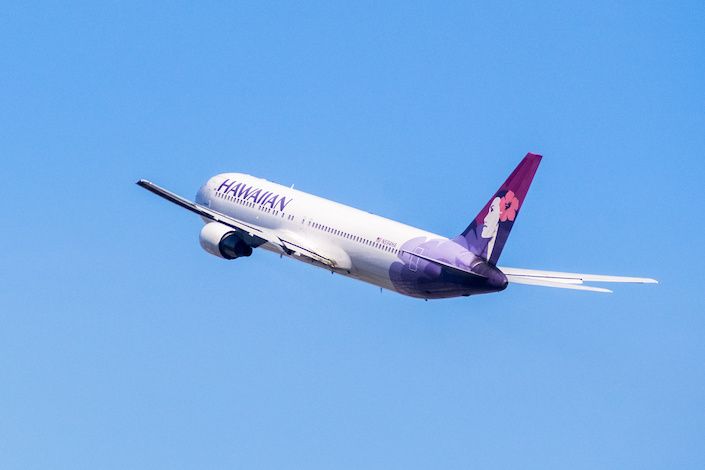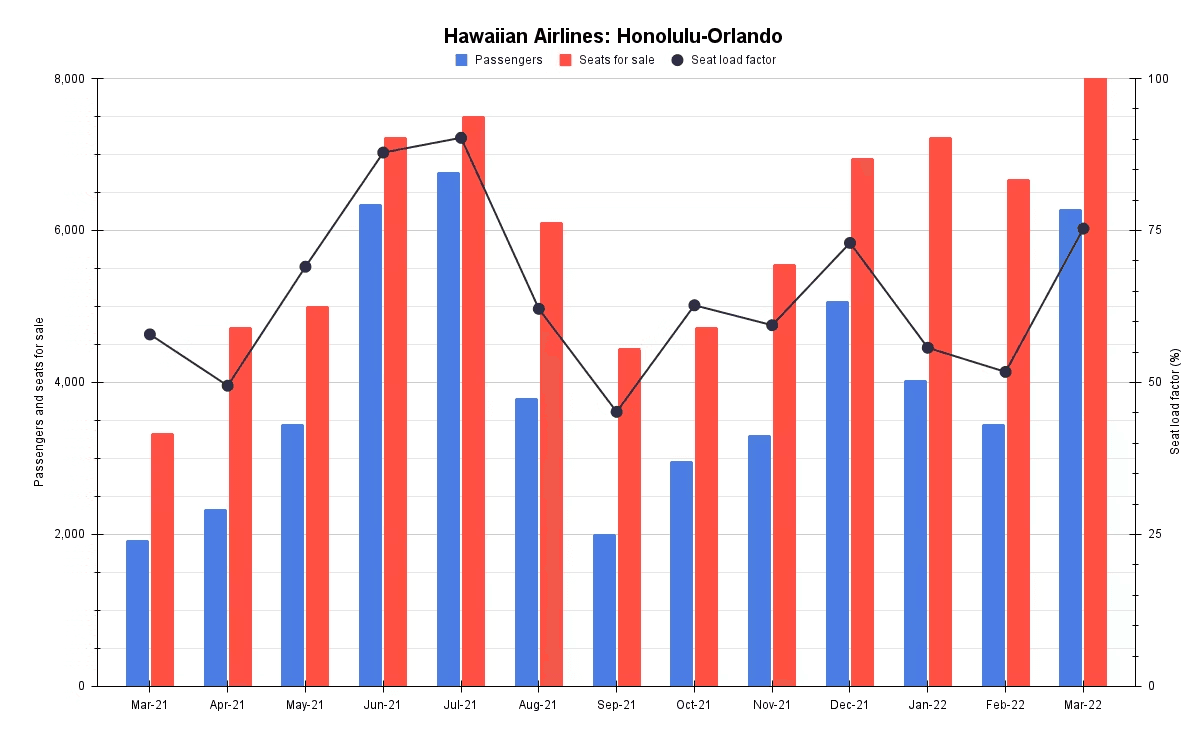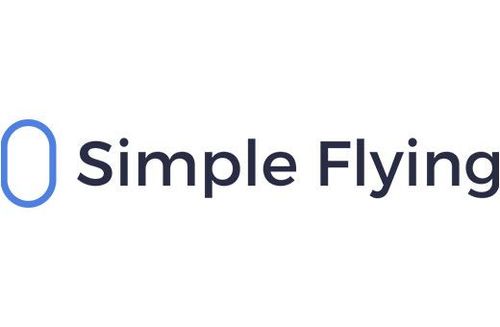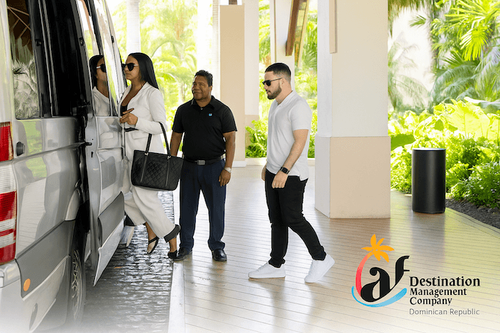Where travel agents earn, learn and save!
News / Why Hawaiian Airlines is ending flights to Orlando
One of the USA's longest domestic routes, Honolulu to Orlando is to end

That didn't last long. Hawaiian Airlines' Honolulu to Orlando service, which began in March 2021 when the pandemic was in full swing, will end in September. As things increasingly return to normal, and as Hawaiian grows frequencies and resumes postponed routes, it could have been an inevitable 'stop gap' that was bound to end. And although it was new and a large market, it had only a 66% seat load factor in its first 12 months, a time of big challenge. Could Austin be next?
Hawaiian to Orlando
Hawaiian took off from Honolulu to Orlando on March 11th, 2021. According to its booking engine, the last bookable flight to Florida is September 8th. Interestingly, the airline's booking engine shows that the last service from Florida will be on the 7th rather than the 9th. It is possible that something is afoot.
The route is served on Tuesdays, Thursdays, and Saturdays, returning the following day. The schedule is as follows, with all times local.
- Honolulu to Orlando: HA86, 16:45-08:15+1 (9h 15m)
- Orlando to Honolulu: HA85, 10:15-14:35 (10h 20m)
The long, 4,757-mile (7,655km) airport pair is the USA's sixth-longest domestic route this month. It began just after Kahului to Long Beach and just before Honolulu-Ontario and Honolulu-Austin. As for many other airlines, freed-up aircraft and closed borders meant it was a period of domestic route experimentation. Still, in terms of passenger traffic, Orlando fitted nicely.
Why Orlando?
In 2019, Orlando was Honolulu's second-largest unserved market to the US mainland after Baltimore, according to the Department of Transportation (DOT). Honolulu-Orlando had around 66,000 roundtrip point-to-point (P2P) passengers. If all Hawaii-Orlando traffic is included, there were over 110,000 passengers. Under the circumstances of the pandemic, it isn't surprising it was attempted.
Note: Orlando achieved a one-way fare of approximately $394 in 2019, excluding a 20-30% fuel surcharge (kept by the airline) and government taxes.
Looking at Hawaiian to the mainland, it is not surprising that West Coast destinations performed far better for passenger revenue per available seat mile (PRASM) because of pretty good fares and much shorter distances. For example, while Orlando had a 23% higher fare than Sacramento, it was 93% longer, pushing down PRASM considerably. In contrast, while Boston achieved a higher fare than Orlando, it is 8% farther. As such, they performed about the same by this measure.

The latest data available to me is March 2022. Source of data: DOT.
Honolulu-Orlando
Between March 2021 and March 2022, DOT data shows that Hawaiian Airlines carried 51,752 Orlando passengers and had a 66% average seat load factor (SLF). Of course, that is low in itself, partly reflecting the period in question and the newness of the route. Indeed, Hawaiian's well-established mainland services often had 77%+ SLFs.
DOT indicates that Orlando achieved about the same SLF as Austin and, as you'd expect, had a higher fare. It is also a much larger market than Austin. However, as the Texas city is some 994 miles (1,600km) shorter, it performed better by PRASM. Is Austin 'safe,' or will it also be removed as things increasingly return to normal?











